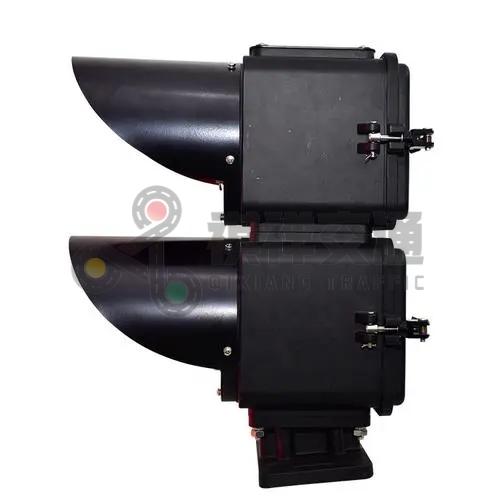Have you ever wondered about the materials used to build those humble but vital traffic light housings that safely guide us through our daily commutes? Although often overlooked, the choice of material for a traffic light housing is critical to ensuring durability, functionality, and longevity. Join us as we delve into the fascinating world of traffic signal housing materials and learn about the unsung heroes who keep our roads safe.
1. Aluminum: Lightweight champion
One of the most commonly used materials for traffic light housings is aluminum. Known for its lightweight yet strong properties, aluminum has excellent corrosion resistance, making it ideal for outdoor installations. It is able to withstand harsh weather conditions ranging from scorching sun to heavy rain, ensuring the longevity of the traffic light housing.
2. Polycarbonate: transparent protective layer
Transparency plays a vital role in traffic light housings as it allows all road users to see the signal clearly. Polycarbonate, a versatile and durable thermoplastic, offers the best solution. It has high light transmission properties, high impact resistance, and excellent optical clarity, ensuring that the signal remains visible and unobstructed in all weather conditions.
3. Glass Fiber Reinforced Polyester: Elastic Guardian
Fiberglass-reinforced polyester (FRP), commonly used to house the base and signal header, is a highly durable and resilient material choice. Combining the strength of fiberglass with the chemical resistance and low maintenance requirements of polyester, FRP can withstand extreme temperatures, shock, and corrosion, making it an excellent choice for traffic light housings in areas prone to harsh environmental conditions.
4. Stainless steel: a solid foundation
The importance of a solid and reliable foundation for traffic lights cannot be overemphasized. In many cases, stainless steel is chosen for its superior strength and corrosion resistance. Stainless steel traffic light housings, whether poles or brackets, can be designed to withstand high wind loads, ensuring they remain upright even in adverse weather conditions. Plus, the sleek look of stainless steel adds to the aesthetics of the cityscape.
5. Anti-UV powder coating: a shield against sun damage
Continued exposure to sunlight can cause fading, discoloration, and deterioration of traffic light housings. To solve this problem, UV-resistant powder coatings are often used to prolong their service life. These coatings protect against harmful UV rays, ensuring traffic lights retain their vibrant color and structural integrity over time.
In conclusion
Traffic light housings may seem unremarkable at first glance, but the materials used in their construction are critical to their function and long-term performance. From aluminum and polycarbonate to glass fiber-reinforced polyester and stainless steel, each material plays a vital role in ensuring traffic signals remain visible, reliable, and resistant to environmental challenges. The use of UV-resistant coatings further helps to maintain the appearance and durability of these important road safety components. So next time you’re approaching a traffic light, take a moment to appreciate these unsung heroes and this material who are working tirelessly to keep our roads safe.
If you are interested in traffic light housing material, welcome to contact traffic light manufacturer Qixiang to read more.
Post time: Aug-29-2023







